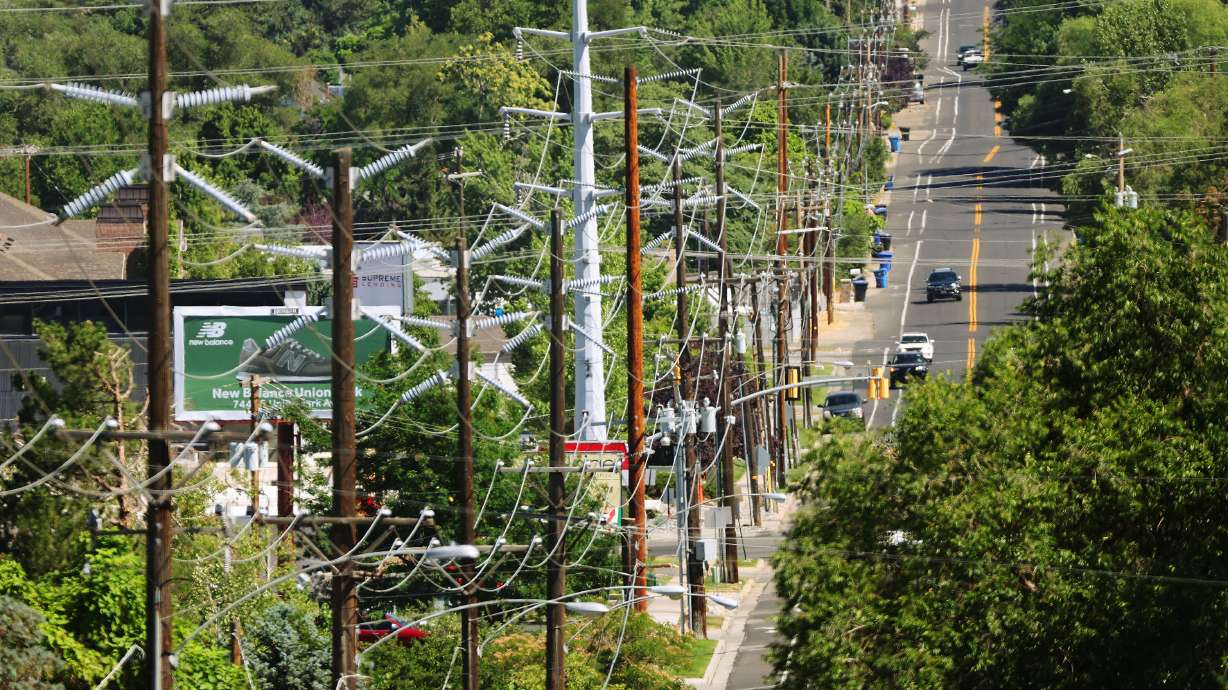Estimated read time: 5-6 minutes
This archived news story is available only for your personal, non-commercial use. Information in the story may be outdated or superseded by additional information. Reading or replaying the story in its archived form does not constitute a republication of the story.
SALT LAKE CITY — Rocky Mountain Power executives say they will continue to push forward a plan to increase rates by about 30% over the next two years, but state lawmakers want it to make major organizational changes or have shareholders take up a portion of the rising costs impacting the public utility company.
It's also possible that only a portion of the controversial two-year increase proposal will be implemented.
Rocky Mountain Power officials also agreed to provide Utah lawmakers a "high-level" report later this year about what a complete restructure of its organization would look like after they were grilled on the matter on Wednesday.
Rocky Mountain's proposal
Rocky Mountain Power unveiled the plan earlier this year, which would raise costs by about 15% in 2025 and another 15% in 2026. The average customer will see a $24.14 increase to their monthly bill, increasing by a little over $10 in the first year and over $13 in the second year.
The increase, company representatives explained after filing the request in June, partly aims to recoup the rising costs of operating plants and purchasing wholesale power since the last general rate increase was implemented in 2020. It would also offset rising insurance rates, as well as the cost of maintaining existing lines and new capital investment projects, such as completing a 400-mile transmission line into central Utah.
These are costs that the company has already incurred in recent years, Rocky Mountain Power President Dick Garlish told members of the Utah Legislature's Natural Resources, Agriculture and Environment Interim Committee. He said it could take the Utah Public Service Commission up to a year to approve any changes. The commission, and organizations, can review data tied to the request before a final increase is determined.
During that time, Rocky Mountain Power must prove that the money it spent over the past few years was necessary and that the 30% overall increase is justifiable.
"We go out and spend money on behalf of customers to make investments to provide an essential service," Garlish said. "We have the obligation and the burden of proof to go before the Public Service Commission and show the money we spent to provide services and the investment we made was prudent to the interest of the citizens of Utah and were worthy to recover the costs of what we spent."
The committee may ultimately approve a portion of the requested increase when it makes a final decision in the coming months, before any rate increase is pushed onto Utah customers.
"It's not uncommon for asks to be adjusted as the process goes forward," Garlish added.
Utah's response
Yet Utah leaders remain hesitant or skeptical about the plan. Gov. Spencer Cox called it "completely unacceptable" and said he would do "everything I can to make sure a rate increase of that magnitude never sees the light of day," in a post on the social platform X shortly after the plan was revealed.
Legislators came to Wednesday's meeting with plenty of questions, asking to see the data used in the decision process. They also asked about or sounded off on other aspects of the plan.
While Garlish said there's no guarantee of any return on investment for shareholders included in the proposal, Rep. Carl Albrecht, R-Richfield, said he believes the company should consider having stockholders "bear some of the burden of this rate increase."
The biggest concern seemed to be tied to out-of-state wildfires.
Rocky Mountain Power is a division of PacifiCorp, which provides power to parts of Utah, Wyoming and Idaho. PacifiCorp also provides power to parts of California, Oregon and Washington. It has dealt with enough lawsuits tied to wildfires sparked during operations in recent years that it set up an entire webpage devoted to wildfire litigation updates.
The company announced in June that it had reached a $178 million settlement with 403 plaintiffs over the 2020 Beachie Creek and Echo Mountain Complex fires in Oregon. That was months after it reached a $299 million settlement agreement with 463 residents and another $250 million settlement with 10 commercial timber companies over the Archie Creek Complex Fire that also impacted Oregon in 2020, among recent cases.
The recent settlements don't factor into the proposal, but the proposal does factor into some insurance premium increases, Garlish said.
Lawmakers ultimately asked Rocky Mountain Power for a review to see if there's a way to change the current operational structure since all six states that PacifiCorp serves have different "policy objectives" when it comes to various topics, including "fire policy."
"I think that's just a subset of the overarching policy differences that we don't share with the other states in the system," said Sen. Scott Sandall, R-Tremonton. "I think it's time we take a look ... to see if the citizens of Utah would be better served with states that more closely align with our policies and not be in a position that we absorb costs based on policy decisions from other states."
Garlish expounded more on the topic during another presentation in a Utah Legislature Public Utilities, Energy and Technology Interim Committee later in the day. He said Rocky Mountain Power has pushed other states to have a wildfire mitigation plan similar to Utah's.
He said the company has also invested in more "advanced fire settings," where the power is shut off when strong wind and dry conditions make an area prone to new fire start.
However, Rocky Mountain Power agreed to provide a report that outlines the steps needed to change the organizational structure between all six states by November. Garlish said he believes there is more interest in this concept as each state goes through different wildfire experiences.
A report outlining a complete shakeup, he adds, would likely take nearly two years to compile as it would involve many difficult steps.











